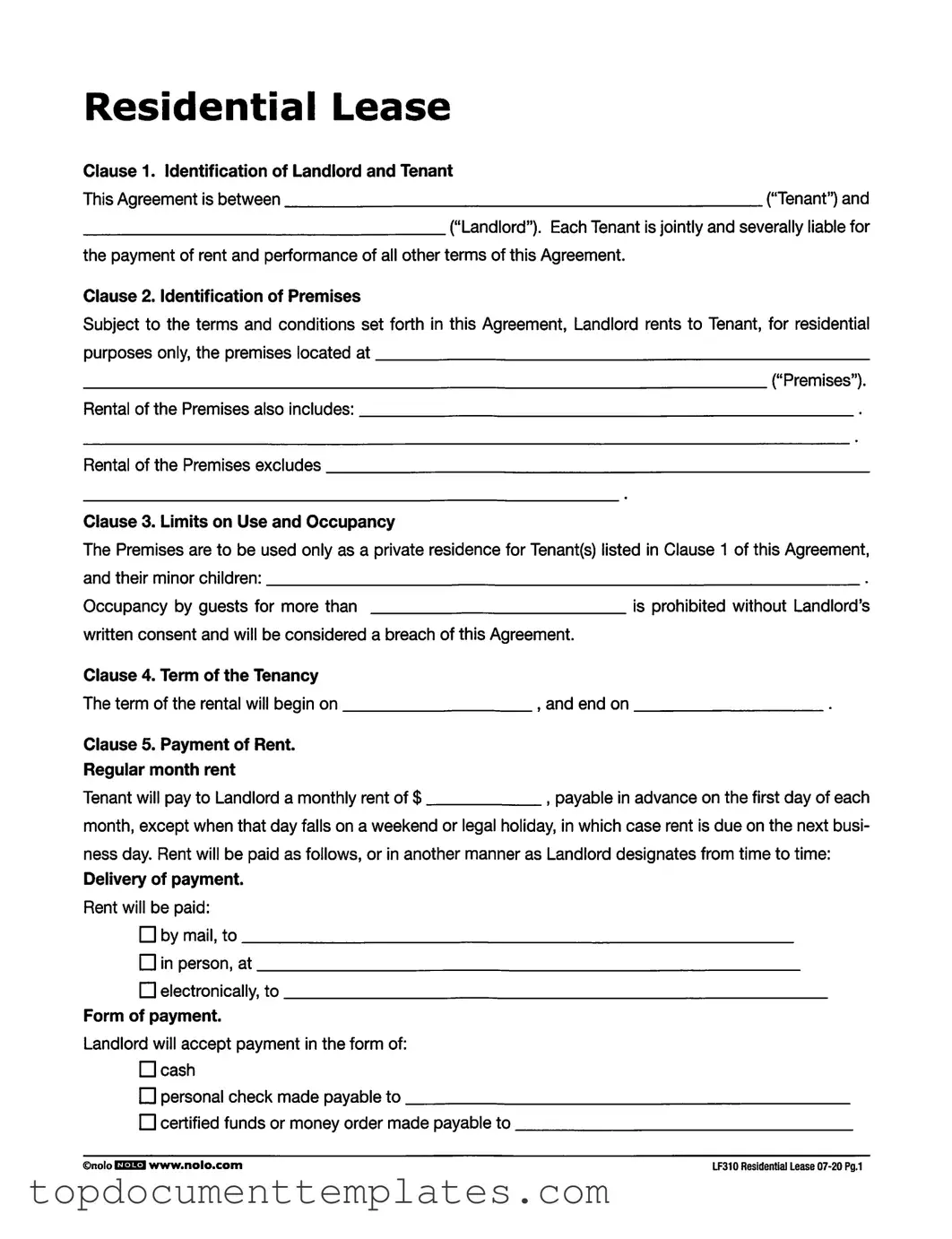The LF310 Residential Lease form is a comprehensive document designed to outline the terms and conditions between a landlord and tenant for renting a residential property. It begins by identifying the parties involved, ensuring that each tenant is aware of their shared responsibilities regarding rent payment and adherence to the agreement. The form specifies the premises being rented, highlighting that the property is intended solely for residential use by the listed tenants and their minor children. Restrictions on occupancy are included, emphasizing the need for written consent from the landlord for any guests staying beyond a certain duration. The lease also details the rental payment structure, including the amount due, payment methods, and provisions for late charges. Security deposits are addressed, outlining the amount required, conditions for its use, and the timeline for its return after the tenant vacates. Additionally, the form clarifies which utilities are the tenant's responsibility and prohibits subletting or assignment of the lease without prior written consent from the landlord. Each of these elements is crucial for establishing a clear understanding between both parties and minimizing potential disputes during the tenancy.
